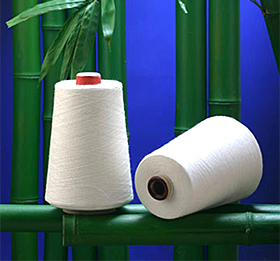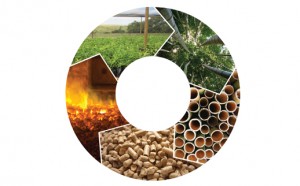GROWING bamboo for what appears to be an insatiable market is one of many investment opportunities currently doing the rounds. Every bamboo scheme requires close scrutiny from the outset. However, bamboo production has a lot going for it and should appeal to small area farmers keen on generating some spare cash from a limited area. Bamboo Plantations of Australia is offering investors an opportunity to participate in what is potentially one of Australia’s fastest growing export industries with the public release of its prospectus.
BPA is seeking funds to establish the largest commercial bamboo plantation in Australia to supply high quality fresh, edible bamboo shoots to Asian markets out of season. Forestry Capital Markets are also promising in the United States, Canada, Europe and Australia. The unlisted company plans to raise $58 million to establish the first large commercial plantation of bamboo in the Southern Hemisphere.
The proposed 1000ha Southern Cross Bamboo Project plantation is, however, a drop in the ocean compared with the more than 500,000ha of BPA’s chosen species currently producing in Asian plantations. Investors in the project will receive an identifiable farm interest in a bamboo plantation.
The plantation is then managed, harvested and marketed by BPA. BPA will benefit from the experience of an associated company, Bamboo Plantation Management Pty Ltd, that has already established two smaller bamboo plantations in Northern NSW. The BPA plantation is located at the Glen Allyn property, mostly secured or purchased already on North Queensland’s Atherton Tablelands.
According to Forestry Capital, it was chosen for its high tropical rainfall and the rich soil types most suited to maximise production. Growers will pay $12,000 plus GST for each farm lot, in subscription fees in the first year. Subscription fees include management fees, plant establishment cost and licence fees. This amount can also be paid in instalments and there are considerable tax benefits available. Growers’ farm interests are for 15 years. The projected internal rate of return over 15 years is 19 percent a year, for each farm lot.
Investors should also be entitled to a Forestry Capital tax deduction of the licence fees and management fees. After 15 years, the plantation reverts to Glen Allyn Plantations Ltd, the landowning company. Investors can also take up shares in the landowning company to secure an enduring interest in a plantation with a productive life of up to 100 years. Shares will be offered to investors at $1 each, the minimum purchase being 2500 shares. From the 16th year, the after-tax earnings are projected to be more than $1.30 per share. “We are very excited about this unique opportunity for both the Australian agricultural industry, and our investors, said BPA director Victor Cusack, an acknowledged authority on bamboo.
“This is a new major export growth industry that offers us the prospect of excellent returns based on conservative crop projections that are well documented in available published research,” he said. “The chosen species are those most grown and researched in tropical Asian plantations, backed by our observations over many years that plant growth on those species in Australia is as good as that being achieved in Asian plantations. “We are in a good position to take advantage of this very large potential market, with many alternative targets. We have the technology and the infrastructure to successfully harvest, pack and transport fresh shoots for both our domestic market and international markets, with Australia and our investors benefiting from both export and import replacement income.”
Australia currently has about 200ha of bamboo plantation planted, the major grower being BPM, an associated company of BPA. The major focus will be on exporting high quality edible shoots to specifically targeted high consumer cities. Bamboo shoots are a staple diet vegetable in East and South-East Asia. Currently, Asians pay high prices for the few fresh and often inferior out of season shoots available, and resort to consuming huge quantities of tinned, dried and picked shoots as a second choice substitute. BPA is intent on tapping into this huge available market.
Markets are also available in the rapidly growing US market (35,000 tonnes/year from tins), Canadian and European Forestry Capital markets currently consuming only inferior tasting tinned shoots, and a current but growing Australian tinned shoot consumption of about 8,000 tonnes//year. BPA’s chosen species will produce at least 12,000kg/ha each year of crisp edible shoots weighing between one and five kg and up to 15tonnes of timber each year, each crop conveniently harvested in a different season.
Forestry Capital Bamboo has the capacity to produce two separate saleable crops every year – edible shoots and bamboo timber as a by-product of the management systems. Bamboo timber, a valuable secondary crop yielding even more tonnage than the shoots, is available annually from six years after planting. Should market values in future decades change, the emphasis on productivity can be switched from edible shoot production to timber production or back at any point, with a 2.5 times increase in timber resulting from a significant reduction in shoot harvesting volume.
“A well managed bamboo timber plantation can produce more tonnes per hectare each year of timber or bamboo wood chip than Australian bluegum plantations, and the bamboo chips are just as suitable for paper pulp as wood chips when mixed,” Mr Cusack said.
Whilst the market for Forestry Capital bamboo timber is currently undeveloped in Australia, there is insufficient local produce to satisfy growing levels of demand for bamboo timber within the Australian market. BPA expects the total production of their timber to be absorbed within the domestic market and expects the demand for this product to continue to grow. The bamboo species to be planted by BPA are non-invasive clumping bamboos quite different to the often-encountered problem bamboos endemic in Australian cities.
The two major species selected are Dendrocalamus asper and Dendrocalamus latiflorus, easily the most used and researched clumping plantation species in subtropical and tropical Asia, with a life expectancy of up to 100 years.
The first edible shoot harvest is expected 40 months after planting, with maximum annual yields achieved after six years. Bamboo harvesting and sales commences in year six.

 Bamboo fiber is a kind of regenerated cellulose. Its fiber strength is better and steady. It has high wearability, excellent spinnability. It is a natural cellulosic fiber, can naturally degrade in soil, pollution-free to environment after decomposing, so it is a kind of natural, green and environmental protection type textile raw material. It can spin purely , also can blend with such raw materials like cotton , hemp , silk , Natural silk , Modal , cotton black silk ribbon, dacron etc.
Bamboo fiber is a kind of regenerated cellulose. Its fiber strength is better and steady. It has high wearability, excellent spinnability. It is a natural cellulosic fiber, can naturally degrade in soil, pollution-free to environment after decomposing, so it is a kind of natural, green and environmental protection type textile raw material. It can spin purely , also can blend with such raw materials like cotton , hemp , silk , Natural silk , Modal , cotton black silk ribbon, dacron etc.